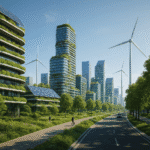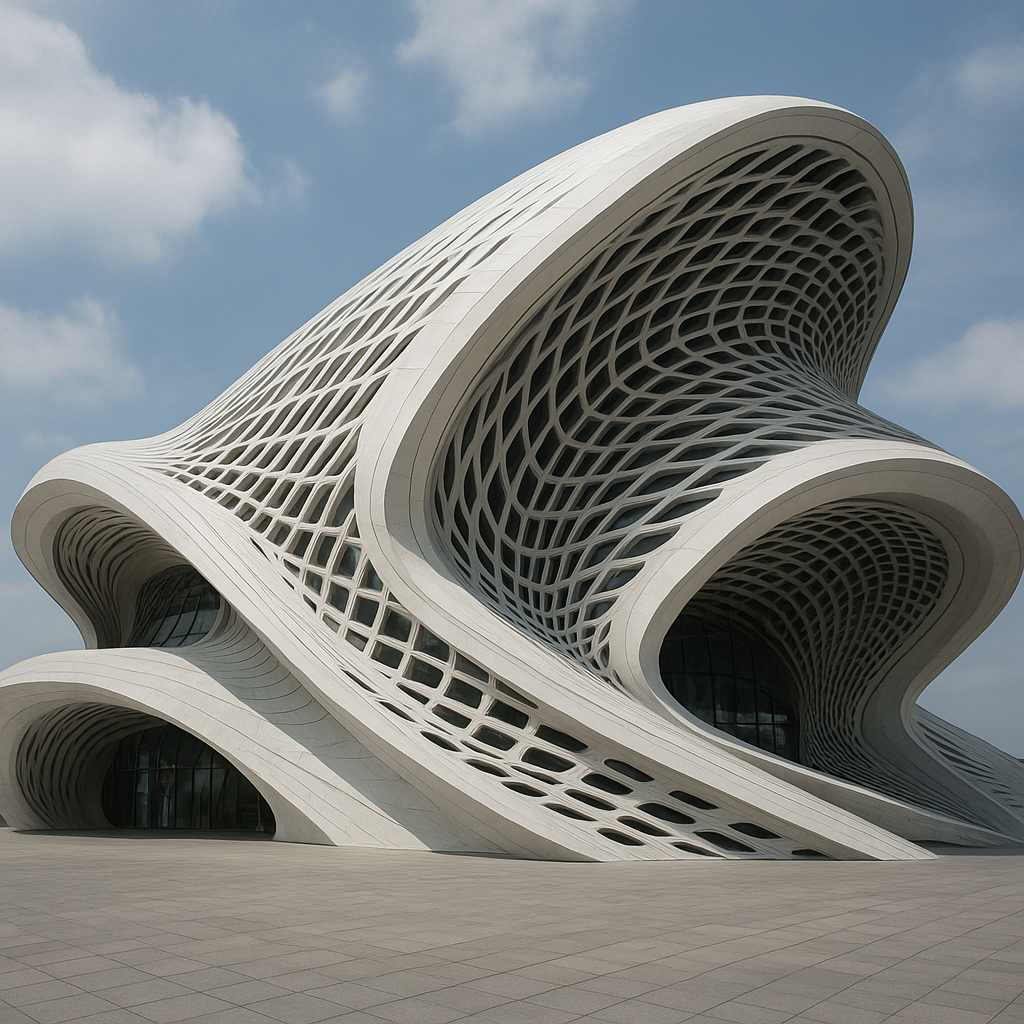The convergence of advanced computation, machine learning, and architectural creativity heralds a new era in building design. By harnessing the power of AI, architects are redefining spatial possibilities, optimizing performance in real time, and pioneering forms that once lived only in the realm of imagination. This exploration delves into the transformative potentials of AI-driven design, charting a course toward sustainability, resilience, and unprecedented aesthetic innovation.
AI-Driven Paradigm Shift in Architecture
Architecture has always responded to the needs of its era, from the soaring cathedrals of the Gothic age to the sleek glass towers of the Modernist movement. Today, AI injects a new level of intelligence into the creative process, enabling architects to explore complex geometries, analyze environmental data, and iterate designs at extraordinary speed. This transformative shift elevates the traditional drawing board into a dynamic platform for experimentation.
- Data-Driven Insights: AI tools aggregate climate models, energy consumption statistics, and user-behavior patterns to inform design decisions.
- Real-Time Feedback: Generative algorithms provide instant performance metrics on structural integrity, daylighting, and thermal comfort.
- Scalable Collaboration: Cloud-based AI platforms connect multidisciplinary teams, breaking down barriers between architects, engineers, and contractors.
Enhanced Collaboration and Creativity
By integrating AI in the early stages of conceptualization, design studios foster a more inclusive environment where ideas are probed with algorithmic precision. Machine learning models trained on vast architectural databases can suggest novel form languages, while virtual reality interfaces allow stakeholders to experience proposed spaces immersively. This synergy between human intuition and computational prowess results in solutions that are both visionary and pragmatic.
Algorithmic Optimization
Where once architects relied on rules of thumb, today’s professionals leverage algorithmic engines to optimize layouts for spatial efficiency, occupant comfort, and resource usage. Parametric workflows, powered by AI, enable rapid exploration of thousands of design variants, each evaluated against multiple performance criteria. The result is a design process that balances aesthetics with quantifiable benefits, driving projects toward superior outcomes.
Generative Design Techniques Empowering Form
At the heart of AI-driven architecture lies generative design—a methodology where parameters and constraints guide software to evolve forms that meet predetermined objectives. This approach has unlocked a renaissance of parametric geometries, curved facades, and organic structures that respond to environmental stimuli and structural demands.
- Solar Optimization: Algorithms orient building massing to maximize daylight and minimize glare, reducing reliance on artificial lighting.
- Structural Efficiency: AI-driven topology optimization calculates material distribution for minimal waste and maximal strength.
- Mass Customization: Residential units can be personalized at scale, with floor plans automatically adjusted to meet individual preferences.
From Concept to Fabrication
Generative outputs seamlessly integrate with digital fabrication tools, such as CNC milling and 3D printing. Architects can translate complex algorithmic geometries into buildable components with modularity in mind—facilitating on-site assembly, reducing construction waste, and accelerating project timelines. This convergence of design, computation, and manufacturing reshapes the entire supply chain.
Smart Materials and Responsive Environments
Beyond form-finding, AI guides the selection and deployment of biomimicry-inspired materials—self-healing concretes, phase-change panels, and photochromic glass. Sensors embedded in building envelopes feed continuous data streams into learning algorithms, enabling facades to adapt dynamically to weather, occupancy, and energy demand.
- Adaptive Skins: Intelligent cladding systems modulate porosity and reflectivity, optimizing indoor comfort.
- Climate-Responsive Facades: AI predicts external conditions, triggering actuation mechanisms to open vents or deploy shading devices.
- Interactive Interiors: Occupant preferences for lighting and acoustics inform real-time adjustments, enhancing well-being.
Bio-Inspired Solutions
Drawing inspiration from natural systems, architects employ biomimicry to integrate fluid ventilation paths and energy-efficient structures. Machine learning models emulate the branching patterns of leaves or the strength of bone matrices, generating lightweight frameworks that maximize performance with minimal material input. Such innovations promise buildings that live and breathe in harmony with their surroundings.
Ethical Imperatives and Sustainable Futures
While AI unlocks remarkable capabilities, it also raises profound questions about the role of automation in creative professions. Ethical frameworks must guide the deployment of intelligent tools, ensuring that technological progress aligns with human values, social equity, and ecological stewardship.
Balancing Automation and Human Values
Fully automated design risks overlooking the intangible qualities that imbue spaces with cultural significance and emotional resonance. By coupling AI with human oversight, architects preserve the craft of storytelling—embedding narratives of place, heritage, and identity into digital models. This human-centered approach cultivates environments that resonate on both a functional and experiential level.
Towards Regenerative Architecture
The ultimate promise of AI-driven design lies in its potential to foster regenerative systems—projects that not only minimize harm but actively contribute to ecological renewal. Closed-loop material cycles, carbon-neutral operations, and adaptive land-use planning emerge from collaborations between architects, ecologists, and AI researchers. Through continuous learning and data feedback, buildings evolve over time, enhancing biodiversity, purifying water, and sequestering carbon.
As the boundaries between the digital and physical realms blur, adaptability becomes the hallmark of enduring architecture. The next generation of built environments will be _alive_ with data, learning from occupant behavior, environmental shifts, and community needs. In this unfolding future, AI-driven design is not a replacement for human ingenuity but a catalyst—unlocking new landscapes of possibility and guiding architecture toward a more sustainable, inclusive, and imaginative horizon.










